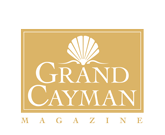
You’ve heard it before: “It was the best of times, it was the worst of times”; “the glass is either half-empty or half-full”; “which do you want to hear first, the good news or the bad news?”.
The quotes are relevant to the Cayman Islands because our current “state of the state” very much depends on the prism through which one views the country.
Our own view is that there is a growing disparity between the success of the private sector while government, coagulated with an oversized and underperforming Civil Service, is falling farther and farther behind in its primary responsibility of providing services efficiently and effectively to its people.
How long this disharmony between the two sectors can coexist is an unknown, but it is clear, at least to this writer, that government processes and its performance standards fall far short of what would be acceptable in the private sector.
First, however, the good news:
In this issue of Grand Cayman, we direct your attention to a special supplement titled “Cayman: Upgrading to ‘World Class’.” It is, in fact, a cornucopia full of good news.
Rarely in recent decades have we seen the construction cranes out in such force. What is especially encouraging is not just the quantity of projects under way but, as importantly, the quality.
Not surprisingly, the Dart group of companies is leading the way with so many ongoing projects that one almost needs a scorecard to keep up. We’ll mention just three:
- Camana Bay continues to expand, fulfilling the Dart family’s original vision of creating an urban center where people can live, work, dine, and shop, all in a beautifully landscaped, secure, tranquil environment. Soon after the grand opening of 18 Forum Lane, a LEED-certified (meaning ultra “green”) office building in which PwC is the anchor tenant, a sibling, dubbed 18 Forum Lane South, is already under construction.
- Just up the street a bit, on West Bay Road, Dart Realty is preparing for the much-anticipated November opening of the Kimpton Seafire Resort & Spa. With 266 “keys,” this luxury resort will add much desirable room stock to Grand Cayman’s Seven Mile Beach inventory. The companion 62 residential units are being offered at prices ranging from $1 million to $8 million.
- Welcomingly, the Dart group has recently purchased the Beach Suites, the Britannia golf course, and the former Hyatt hotel property across the Esterley Tibbetts Highway. As residents know all too well, the Hyatt was effectively destroyed in 2004 when Hurricane Ivan swept through the island, and the skeleton of the onceglorious Hyatt hotel has conspicuously remained as perhaps the island’s worst eyesore. At press time, the future use of the property had not been announced, but we have every hope that the Dart group will soon remedy the blight that remains of the hotel.
Let’s look elsewhere:
The Treasure Island Resort on Seven Mile Beach has been sold, rebranded (“Margaritaville Beach Resort”) and, most importantly, will be completely renovated and refurbished. We’re counting on the Howard Hotel Group of Miami to add a few stars to this venerable but long-neglected property.
In South Sound, Cayman Enterprise City, a special economic zone, will be breaking ground later this year for its impressive campus, complete with a 10-acre lake, that will be built out over the next 20 years. Phase One will include two architecturally beautiful $25 million buildings.
In fact, formerly “sleepy” South Sound is about to get clamorous wake-up call: Stefan Baraud’s six-unit Shore Club: sold out; Davenport Development’s 56-condo Vela Phase I: sold out; Phase II, with 56 condominiums: half sold out; Phase III: 56 more condos on the way.
Moving east, a $200 million condominium project called St. James Point is about to occupy the long-languishing site in the Beach Bay area, not too far away from Ironwood, the community development being built in Frank Sound around an 18-hole Arnold Palmer Signature golf course and town center.
Of special note in the neighborhood, of course, is Health City Cayman Islands, the tertiary-care facility that is the vision of famed Indian heart surgeon Dr. Devi Shetty, who partnered with Ascension in the United States to bring this project to fruition.
Phase One, which includes a state-of-the-art 140- bed hospital, is already attracting patients from all over the Caribbean in pursuit of the highest quality healthcare at the lowest possible cost. An additional $40 million expansion is about to get under way.
Meanwhile, work has already begun to modernize and greatly expand Owen Roberts International Airport, and plans are being made (finally!) for a new downtown cruise ship landing and terminal as well.
All of this economic activity, and so much more, might be masquerading some serious social problems that have gone unattended during Cayman’s nearmiracle economic boom that began in the mid-1960s.
The Cayman government is so awash with legislators, regulators, departments, boards, inspectors, bureaus, advisors, consultants, committees, subcommittees, and on and on ad infinitum that the “system” has slowed to a crawl.
That’s the “bad news” we referred to earlier.
Increasingly the population of Cayman, once known for its unity and harmony, is becoming divided.
Demographically, more than half of the island’s 60,000 residents were not born in Cayman, and tensions between “indigenous” Caymanians and those born elsewhere (especially work permit holders) are becoming pronounced.
Unfortunately (and shortsightedly) the rapid rise of the offshore financial industry, followed soon by tourism, did not result in Cayman’s raising its educational standards to ensure that graduates emerged “job ready” to begin meaningful careers.
One consequence of this is that today, with approximately 23,000 work permits in place, Cayman has a large underclass of citizens who are ill-equipped educationally and even attitudinally to find work in their own country. A recent study released by the National Workforce Development Agency revealed that 98 percent of its clients were deemed “not work ready” to enter into the employment marketplace.
If this incongruence between the availability of jobs and the skill level of the local workforce to fill them is not addressed, Cayman will increasingly become a two-tiered society: the well-to-do on the one hand and the economically dependent on the other.
It’s already happening: This year more than $50 million will be distributed to the latter group through the Social Services department.
Government, once a welcome partner with the business community, increasingly is viewed as a hindrance to economic development. Cayman was once known for its nimbleness and its ability to get things done quickly, without the paralysis that plagues so many government-bloated bureaucracies.
That is no longer the case.
In part to provide employment to the otherwise unemployable (and at the same time engender political support for themselves), recent governments have swollen the size of the public sector (which includes the Civil Service, government authorities, and government- owned businesses) to more than 6,000 workers – an astonishing number for such a small population.
The cost is almost unthinkable – certainly it is unbearable. Two numbers speak volumes: $1.4 billion in unfunded healthcare liabilities to government retirees and their families; and $400 million in unfunded (actually underfunded) pension payments that will come due progressively in coming years.
The Cayman government is so awash with legislators, regulators, departments, boards, inspectors, bureaus, advisors, consultants, committees, subcommittees, and on and on ad infinitum that the “system” has slowed to a crawl.
Even those poor people who are applying for social services (the $50 million allocation mentioned above) must wait three months even to get an appointment with the “Needs Assessment Unit.”
We know of one real estate project that is totally stalled while the developer waits for various government licenses and permissions. So far he’s been waiting for nearly a year.
The consequences of such delays are considerable. Once government gets out the way of this particular project, 50 million dormant dollars will be energized, transferred from the developer’s bank account to the Cayman economy. The immediate result will be increased employment (the hiring of construction workers and those in the trades), the purchase of materials (all dutiable; no “concessions” were asked for nor received), and a whole host of other benefits that flow from increased economic activity.
Speed, flexibility, and agility are most consequential in a world where, it is said, “It’s no longer the big that eat the small; it’s the fast that eat the slow.”
It is time – actually the time is long past – for government to raise its standards, reduce dramatically its spending (beginning with payroll and benefits), and privatize scores of government services and lowperforming businesses that compete unfairly with the private sector (since they are not held to account year after year for their operating losses).
Yes, Cayman’s private sector, as our Special Supplement fulsomely describes, is “Upgrading to World Class.” Our government needs to do no less.


















